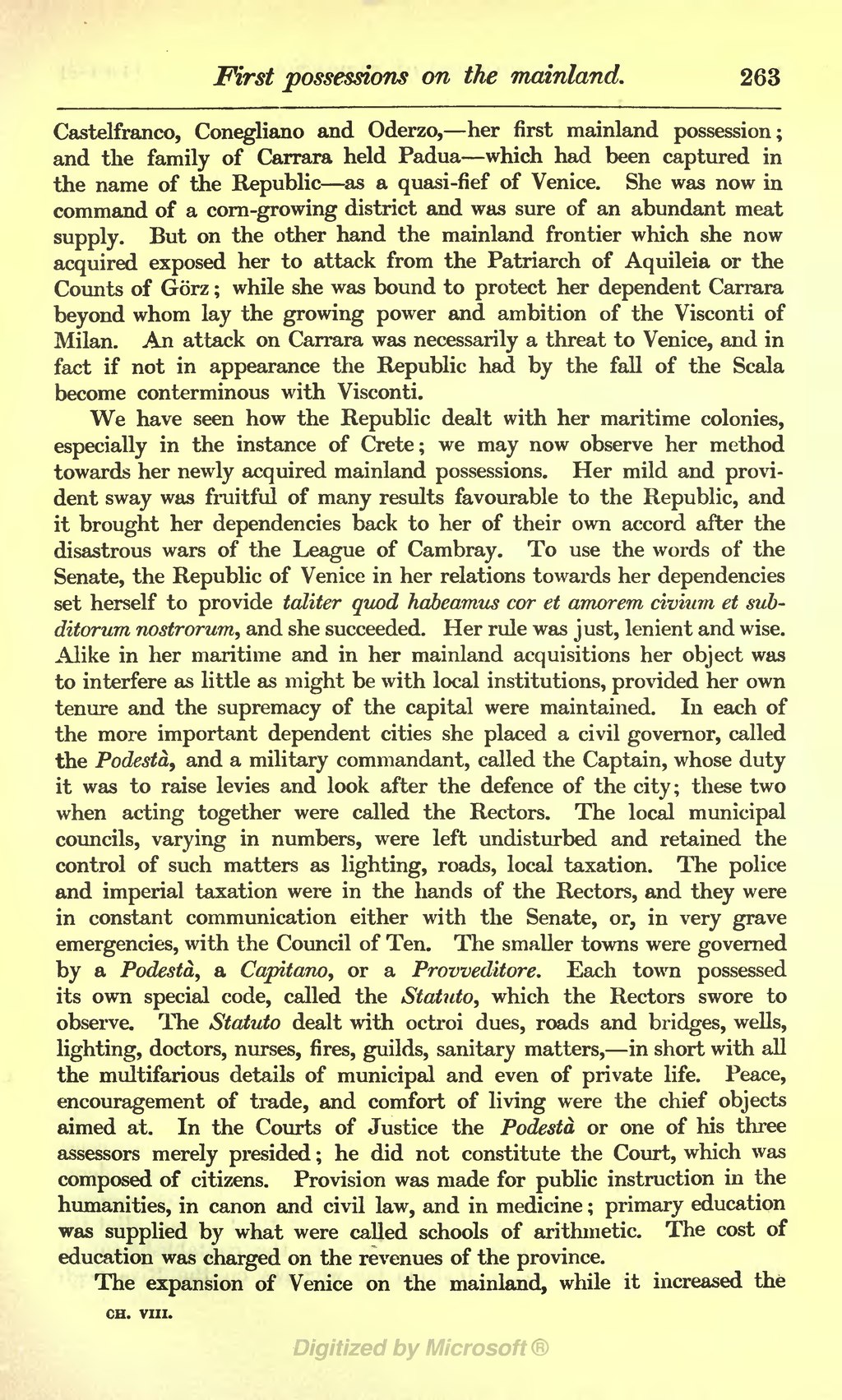Castelfranco, Conegliano and Oderzo,—her first mainland possession; and the family of Carrara held Padua-which had been captured in the name of the Republic-as a quasi-fief of Venice. She was now in command of a corn-growing district and was sure of an abundant meat supply. But on the other hand the mainland frontier which she now acquired exposed her to attack from the Patriarch of Aquileia or the Counts of Gorz; while she was bound to protect her dependent Carrara beyond whom lay the growing power and ambition of the Visconti of Milan. An attack on Carrara was necessarily a threat to Venice, and in fact if not in appearance the Republic had by the fall of the Scala become conterminous with Visconti.
We have seen how the Republic dealt with her maritime colonies, especially in the instance of Crete; we may now observe her method towards her newly acquired mainland possessions. Her mild and provident sway was fruitful of many results favourable to the Republic, and it brought her dependencies back to her of their own accord after the disastrous wars of the League of Cambray. To use the words of the Senate, the Republic of Venice in her relations towards her dependencies set herself to provide taliter quod habeamus cor et amorem civium et sub-diforum nostrorum, and she succeeded. Her rule was just, lenient and wise. Alike in her maritime and in her mainland acquisitions her object was to interfere as little as might be with local institutions, provided her own tenure and the supremacy of the capital were maintained. In each of the more important dependent cities she placed a civil governor, called the Podesta, and a military commandant, called the Captain, whose duty it was to raise levies and look after the defence of the city; these two when acting together were called the Rectors. The local municipal councils, varying in numbers, were left undisturbed and retained the control of such matters as lighting, roads, local taxation. The police and imperial taxation were in the hands of the Rectors, and they were in constant communication either with the Senate, or, in very grave emergencies, with the Council of Ten. The smaller towns were governed by a Podesta, a Capitano, or a Provveditore. Each town possessed its own special code, called the Statute, which the Rectors swore to observe. The Statuto dealt with octroi dues, roads and bridges, wells, lighting, doctors, nurses, fires, guilds, sanitary matters,—in short with all the multifarious details of municipal and even of private life. Peace, encouragement of trade, and comfort of living were the chief objects aimed at. In the Courts of Justice the Podesta or one of his three assessors merely presided; he did not constitute the Court, which was composed of citizens. Provision was made for public instruction in the humanities, in canon and civil law, and in medicine; primary education was supplied by what were called schools of arithmetic. The cost of education was charged on the revenues of the province.
The expansion of Venice on the mainland, while it increased the
